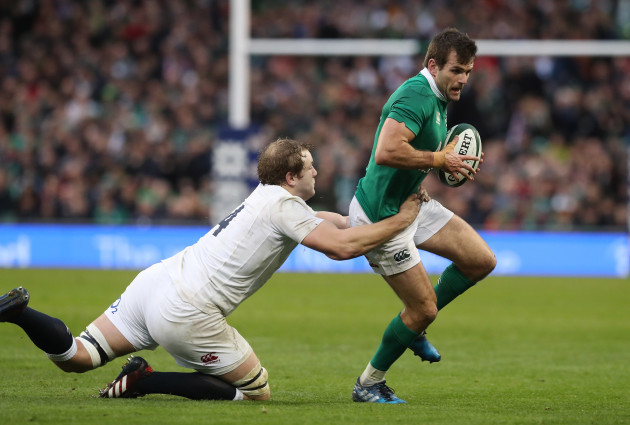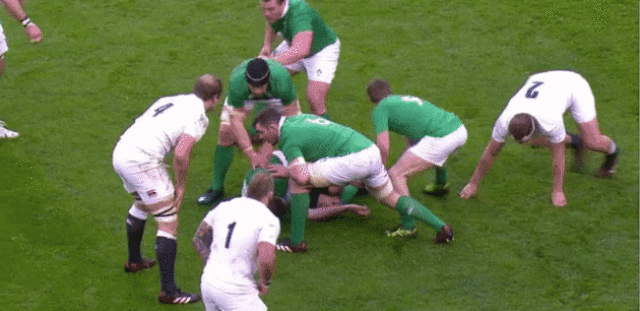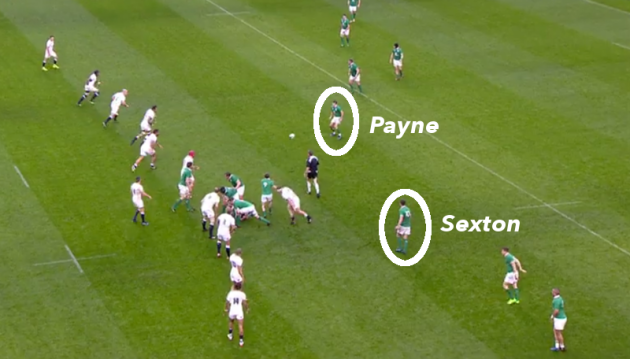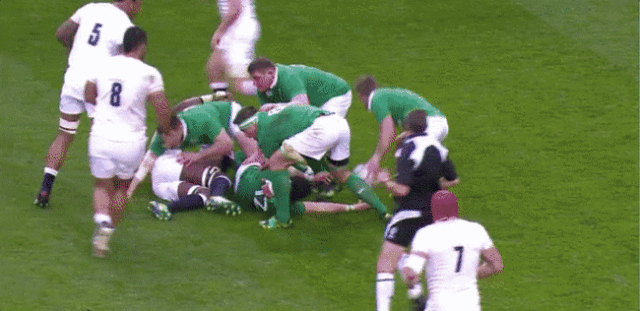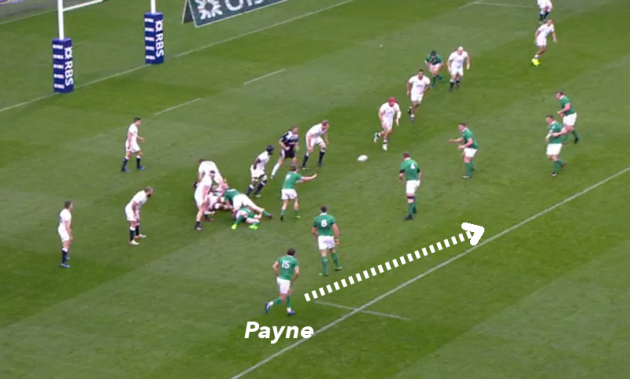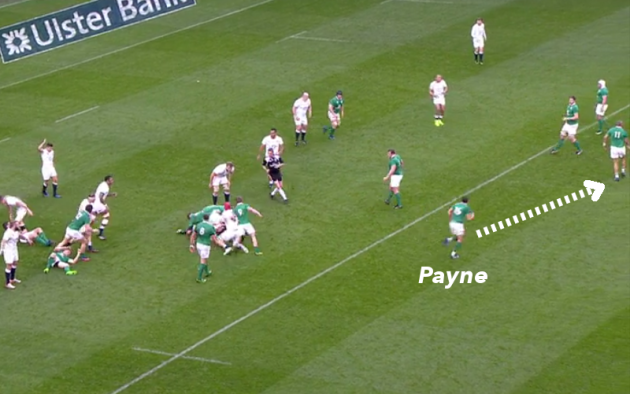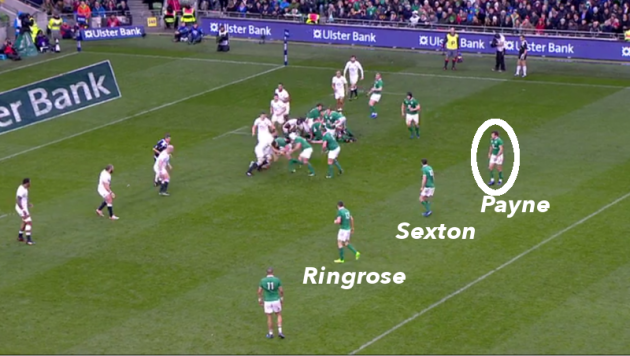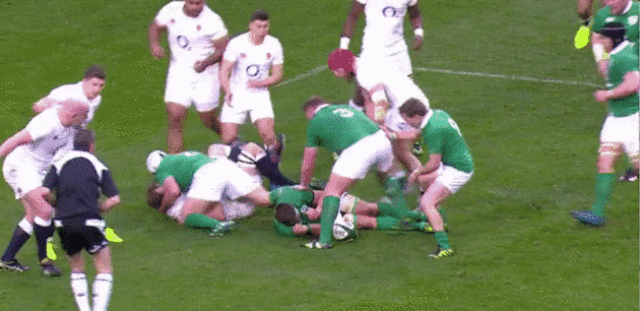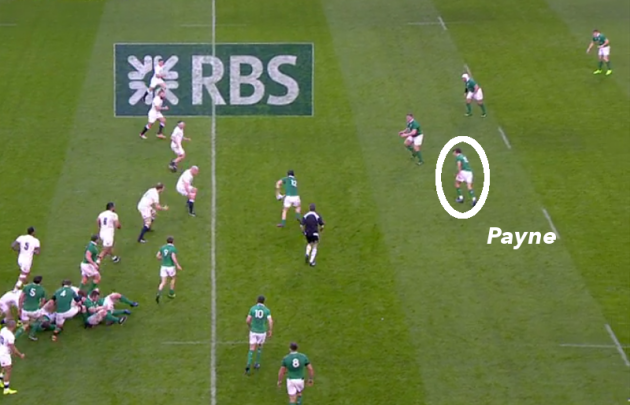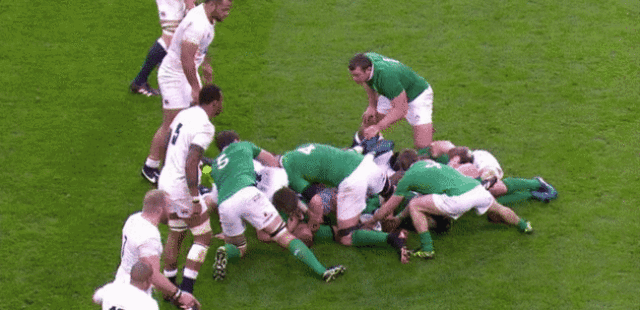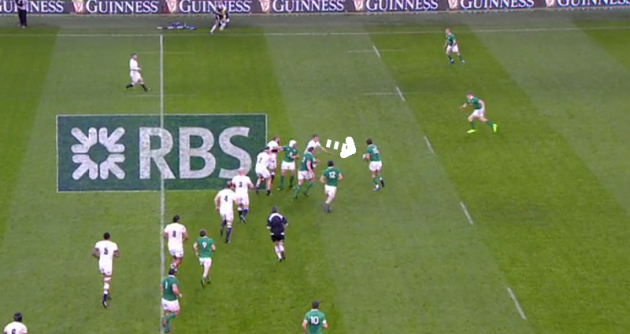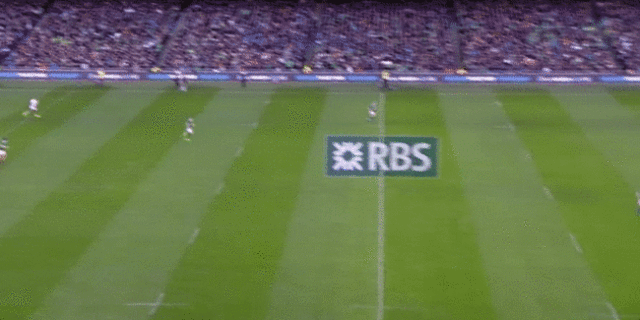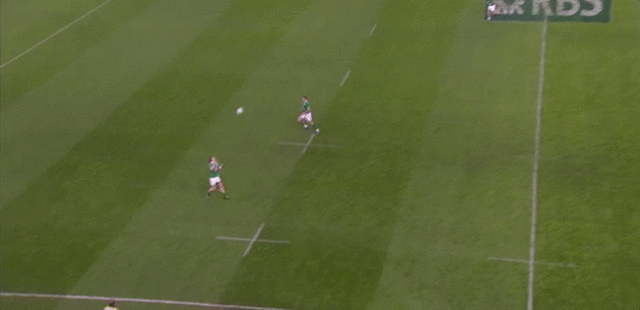Updated 8am, 20 March
MANY OF THE frustrations around Joe Schmidt’s Ireland team selections in recent seasons have centred on the fullback position.
Rob Kearney often receives a disproportionate amount of criticism and his strong points are sometimes overlooked, but few could argue against the suggestion that he is not the most creative force Ireland could pick at 15.
The Leinster man is brilliant aerially and has excellent positional sense, while his communication and contact skills are superior to most of his rivals. Schmidt also likes Kearney’s leadership, which can be difficult to accurately value from the outside.
But with Kearney injured for Saturday’s win against England, we got the latest glimpse of what Ireland could offer in attack with a different player at 15.
Jared Payne was excellent at fullback in the first Test of the tour of South Africa last June – again when Kearney was injured – but he has largely been used at outside centre by Schmidt.
With Garry Ringrose performing well in that position, however, Payne’s quality as a fullback becomes even more interesting for Schmidt and Ireland in the future.
On the evidence of the South Africa tour and Saturday’s win over England, Payne can certainly improve Ireland as an attacking force from fullback.
Second playmaker
Ireland had been crying out for a second playmaker throughout this Six Nations, with the over-reliance on Johnny Sexton’s creative and organisational skills plain for all to see in Ireland’s phase play.
The most damning passages in this regard came during Sexton’s stint in the sin bin in Cardiff in round four, when Ireland looked rudderless without their out-half.
Robbie Henshaw and Ringrose have many values as centres, but neither is truly comfortable as a playmaker. That may come with greater experience, but both players would likely acknowledge that it is not a strength in their games at this stage.
Even when we go back to the France match in round three, there was one damning passage of attack from Ireland in the French 22 when Sexton was down injured back near the halfway line.
The out-half had been smashed by Eddy Ben Arous as he took the ball to the line to free Simon Zebo for a linebreak. With Sexton prone behind them, Ireland lost shape in their attack over the course of 19 phases and eventually knocked the ball on.
With Payne on the pitch on Saturday, those worries eased for Ireland.
The freedom afforded to Payne from fullback means he can pop up at first receiver and take some of the burden off Sexton. With his excellent skill set, strong vision and good decision-making skills, Payne is at ease calling the shots in these positions.
We see Payne at first receiver for Ireland in the example above, and while his pass is not perfect – he was understandably rusty early on in the game – and England’s defence is in decent shape, we get a good sense of what his presence in the team offers Ireland.
With Payne as first receiver on the right of the initial ruck, we can see that Sexton is also in the first receiver slot over on the left.
There’s not much on for Ireland to the left of the ruck, but the point here is that Ireland are now in a position where they have two players at first receiver who are comfortable in that role.
Henshaw makes a good carry as Ireland play to the right and, on the very next phase, we get another glimpse of Payne’s creativity at first receiver.
The Ulsterman beats Owen Farrell with his excellent footwork and would free Keith Earls to have a dart up the touchline but for Elliot Daly’s knock-on.
Sexton – or whoever is at out-half – will continue to be the primary playmaker for Ireland, but Payne’s presence offers greater possibilities for the Irish attack in this regard.
Off the ball
Watching games in the flesh is a something of a necessity for assessing the effectiveness of all players, but particularly those in the back three.
The zoomed-in view of TV shots rarely gives us insight into how a player is moving around the pitch off the ball or how they are communicating with their team-mates.
Payne excels in both of these areas, reading play intelligently and making good decisions about where to position himself, as well as communicating that to others concisely.
We get a fine example of Payne’s movement off the ball in one of Ireland’s early attacks against England.
Above, we can see Payne making a move from the left of the pitch across to the right as Kieran Marmion hits Tadhg Furlong to make a one-out carry for Ireland.
The temptation for Payne on the next phase is to act as first receiver again – Sexton is on the ground. Indeed, Payne briefly slows his run and considers stepping into that role.
However, he rapidly recognises that Ireland are best served by him getting wide to the right and creating an overlap there, so he steps on the accelerator to get across.
Payne can see that Simon Zebo – a creative player who can also playmake, but is often required to hold width out on the left wing – is in a position to act as the first receiver here, so Payne continues on his way.
By the time the ball makes it wide right, after Zebo’s attempted kick is blocked and via a beautiful reverse pass from Rory Best – penalty advantage is being played – Payne is all the way over on the right-hand side.
When the ball arrives into Payne’s hands, we see his attacking quality again, as he fends Daly, using the England wing’s tackle attempt to actually propel himself forward.
He accelerates clear of the despairing tap tackle effort of Daly, and then draws Mike Brown inwards before offloading to Earls on the right touchline.
Payne might wonder whether he would have been better served by passing pre-contact, but Brown does a solid job of not biting in too early.
We should underline that Kearney has made runs like this for Ireland during this Six Nations – including one cracker against Scotland – but Payne shows his own ability inside the opening 10 minutes of this clash with England.
Soon after, he links into the Irish attacking line from a very different position, starting inside Sexton.
Again, watching this unfold live in the stadium allowed those present to watch the communication between Sexton and Payne, who exchange words as Jack McGrath makes a carry.
They decide on a clever move that also involves Ringrose and they strike at England on the next phase.
Marmion hits Ringrose from the ruck, with Sexton fading out behind the Ireland 13, before Payne arrives arrives late onto the delayed pass from Ringrose.
Courtney Lawes makes a good read for England and shuts the play down, but it’s encouraging for Schmidt to see his players running a relatively fresh ‘wrinkle’ like this inside the opposition 22.
This brief example also gives us insight into how Sexton and Payne combine comfortably, which we already knew from when the Ulsterman has been at outside centre for Ireland.
Second layer
We analysed the issues with Ireland’s poor use of the second wave of their attack after the defeat to Scotland in round one, and it has continued to be an issue ever since.
However, there was a superb example of how effective Ireland can be in this area against the English and Payne was centrally involved.
Again, we got a sense of Ireland organising themselves without the need for Sexton to be the hub, with Payne, Henshaw and Furlong producing a brilliant play.
Payne is situated in the ‘second wave’ of the attack, behind the attacking line.
Encouragingly for Ireland, Henshaw steps into first receiver, although Furlong does demand a call from the centre as he waits in midfield. Tight forwards like Furlong like to be provided with a call as early as possible.
Payne helps the process, sitting in behind Furlong and making himself available for a pass from the prop.
Henshaw passes to Furlong and the tighthead makes a lovely second pass out the back door of Best to Payne.
Crucially, Payne is flat enough to draw George Ford up to tackle him, and he has the handling skill to get an accurate pass away to Ringrose.
Ringrose then does superbly to draw Daly in and release Earls up the right with a sublimely-timed pass.
This is the kind of opportunity that Ireland had not been converting into a linebreak often enough in this championship, with their fixing of defenders, depth, running lines and passing skills inconsistent.
This is also a prime example of how Ireland can cut defences apart when they are accurate. Fascinatingly for Schmidt, it comes without the playmaking presence of Sexton – note he is offering himself as first receiver over on the left-hand side again, keeping England alert on that side of the ruck.
Henshaw steps up as the first receiver, pushes a pass rather than bludgeoning once again, then a skillful front row player in Furlong draws the defence and makes a good decision to pass a second time.
Payne is flat enough to really challenge the defence and draw in the edge defender, before Ringrose shows off the kind of brilliant basic skills that he can offer this team.
Earls is tackled in the English 22 and there is a knock-on on the very next phase, but Schmidt will have been deeply pleased with the quality of this build-up play. For Payne to be centrally involved was not an accident.
Kick return
One of the weakest areas of Ireland’s game under Schmidt has been their kick return, where they have appeared not to bring a convincing try-scoring or line-breaking mentality.
Payne’s return in the 15 shirt saw them perform well in this department, however, with Sexton appearing to enjoy the chance to run off him.
Above is a glimpse of that, as Payne carries the fielded ball back at England with intent, the ball in two hands making it difficult for the defenders to read.
We see Sexton make a sweeping run from the middle of the pitch all the way to the left touchline, immediately sensing a chance.
Again, Payne’s decision-making is perhaps rusty and Sexton is frustrated not to receive the pass, although Anthony Watson does well this time to keep his body open, rather than biting in early, meaning he is covering Sexton until the last second.
But the intent from Ireland must be exciting for Schmidt and his coaching staff. Essentially, Payne is simply tackled running the ball back here, but there is more energy and possibility to it.
Payne did cut through the English defence on kick return later in the game, a bust that really should have led to a try.
Andrew Conway immediately looks for Payne on his inside after fielding a poor England kick, and the Ireland fullback takes off on a superb run.
In truth, this bust is about Payne’s strength, determination and some poor English defence, but to see a linebreak on kick return must have greatly enthused Schmidt.
Not to convert the linebreak into a score was a major frustration and something we will return to elsewhere.
Next opportunity
As mentioned before, Payne did look rusty early on in this game having played against the two weak Italian teams in his three Pro12 appearances for Ulster since returning from a kidney injury.
That lack of top-level match sharpness was apparent in the 31-year-old’s knock-on of Ben Youngs’ kick in the second minute.
Payne dropped another English kick soon after, although he did eventually warm to the aerial task and fielded a number of high balls under pressure from the chase.
His ability under the kick is usually good, although Kearney is certainly the best option Ireland have in this regard and Schmidt is likely to consider his fullbacks on a ‘horses for courses’ basis.
Payne chased Ireland’s own kicks very well on Saturday, hounding after Marmion’s boxed exits to pressure England’s fielding players well.
Payne only had to complete three tackles for Ireland, but we know how strong he is defensively – in terms of technical skills, communication, decision-making and his reading of the game.
Payne is obviously still not at his peak, having only recently returned from injury, but the glimpses of his quality and the dimension he added to Ireland’s attack is food for thought for Schmidt moving forward.
Subscribe to The42 Rugby Show podcast here:
